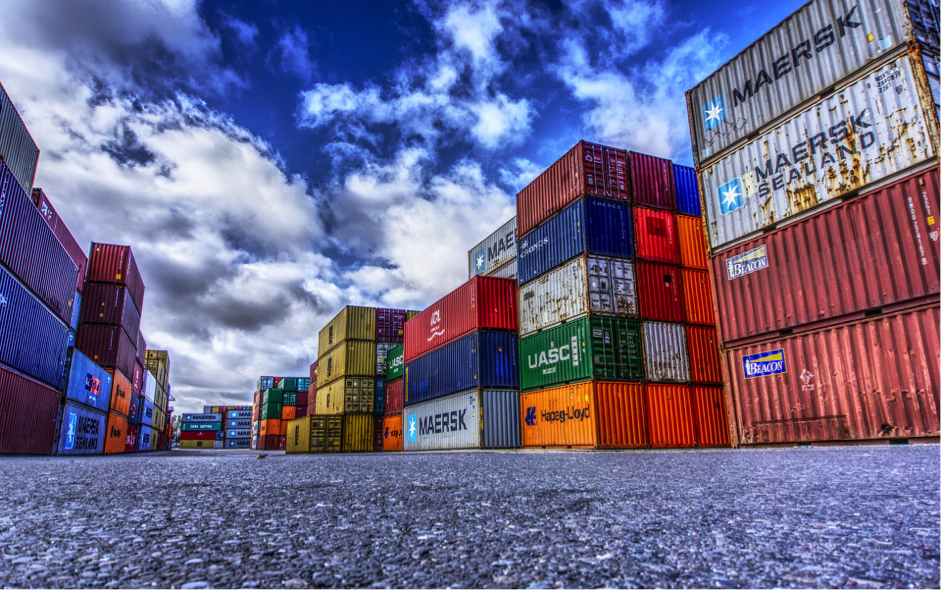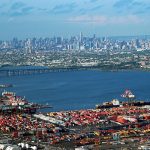Answering Your Questions About International Shipping Peak Season 2023
Freight rates, particularly Asia to U.S. West Coast (USWC) freight rates, have increased by more than 100% since June. That’s not too surprising, since we’re in the peak season, and freight rates tend to rise during the peak season. However, seemingly everyone has been calling this a weak peak season. Is that true? If it is, why have freight rates increased so much? Is there another factor pushing them up? Are they still climbing?
We’ll get into all these questions in today’s post.
Is This a Weak Peak Season?

Now, this hasn’t by any means been a spectacular peak season. But, yes, we are still seeing a peak season. In fact, while I might still call it somewhat muted, it hasn’t been a terrible peak season either.
Almost two weeks ago, Bill Mongelluzzo reported in a Journal of Commerce (JOC) article that U.S. July imports from Asia reached an 11-month high:
US imports from Asia increased for the fifth consecutive month in July to 1.46 million TEUs — the highest since last September, raising the likelihood that the eastbound trans-Pacific trade will return to year-over-year import growth this fall.
July’s imports were up more than 35% from the 2023 low of 1.08 million TEUs recorded in February and matched in March, according to PIERS, a sister product of the Journal of Commerce within S&P Global.
With August closing right now, we still have a little wait to see its official cargo import numbers. However, I often look at Universal Cargo’s shipment numbers to get an indicator on what’s happening in the industry.
Indeed, Universal Cargo had an increase in shipments from June to July, as would be expected from the overall trend Mongelluzzo reported. But Universal Cargo’s internal numbers show we had an even larger increase in shipments from July to August. That was 15% increase compared to a 4% from June to July. I doubt the industry’s growth will match that exactly, but I would expect to see growth in Asia to U.S. August imports from what was imported in July. Of course, it’s always possible that Universal Cargo is an outlier.
A number of reports are still saying there has not been and probably won’t be a large 2023 inventory restocking from retailers in the wake of overstocking during the pandemic’s shipping boom followed by severe inflation and economic uncertainty. Some are pointing to the ILWU Canada strike as helping to push up import numbers through the USWC in July and August. That would mean the peak season is a bit weaker for the U.S. than the numbers would make it appear. The strike ended as July reached its last couple weeks, but uncertainty over the strike restarting lingered on in the days following, making it likely to have had some impact in July and August USWC shipping numbers.
Ultimately, this peak season is somewhat weak, but it’s not altogether terrible.
Is a Factor Other Than Volume Pushing Up Rates?
There are many factors that affect ocean freight rates. Of course, the biggest tends to be volume. The basic laws of supply and demand apply to the international shipping industry.
When there is more volume shipped internationally, it puts upward pressure on freight rates. As noted, there has been an increase in cargo volume. However, the increase we’ve seen wasn’t enough to increase freight rates as much as we’ve seen. Carriers are able to manipulate that supply and demand equation. Which they have. And that’s probably the biggest factor in the increase.
Carriers have been aggressively blank (cancel) sailing a great many voyages to reduce capacity (supply) and help them increase freight rates. Combining blank sailings with a series of general rate increases (GRIs), which are common this time of year, has helped carriers turn a modest volume increase into a significant freight rate increase.
To give an idea of the amount of blanked sailing we’ve seen from carriers, Mongelluzzo reported the following in another JOC article:
Spot rates have more than doubled since June, owing to a seasonal increase in import demand and labor-related supply chain disruptions, but mostly because carriers have managed capacity by aggressively canceling — or blanking — sailings, according to industry analysts.
According to Sea-Intelligence Maritime Analysis, in July, carriers blanked nearly 20% of total capacity to the West and East coasts of North America. That is the highest level of blanking since February through April when import volumes hit their lows for the year thus far.
There are other factors that also put upward pressure on freight rates. Port congestion and supply chain disruption are common ones. The ILWU Canada strike and the bottleneck at the Panama Canal caused by a drought there likely gave some upward pressure. However, neither are likely close to having the impact carriers’ blank sailing has had.
Are Freight Rates Continuing to Rise?
During the writing of this article, we’re right on the verge of another round of GRIs dropping. Despite this, the freight rate rise we’ve been seeing appears to be stalling.
Just a few days ago, Greg Miller reported in a FreightWaves article:
Container shipping spot rates in the Asia-U.S. trade have halted their ascent after rising double digits since late June. Several spot-rate indexes are now showing a retreat from recent highs.
Spot rates still remain relatively healthy — above pre-COVID spot rates and current contract rates — and it’s too early to know whether this is the start of a pronounced reversal or just a temporary setback.
Two weeks ago, all the reports were that freight rates were continuing to rise. Tomorrow, the next wave of GRIs start dropping. However, reports and predictions are now hitting like Miller’s, making it likely we’ll see a small surge in freight rates at the beginning of September that won’t likely be maintained through the end of the month.
The international shipping industry is always volatile when it comes to freight rates. Carriers, through their alliances, have a strong ability to manipulate capacity with blank sailings. We saw an extreme example of this when the pandemic first hit. It was believed shipping volumes would fall because of the pandemic, and carriers would lose billions. Carrier alliances blanked hundreds of sailings, sinking supply well below demand. They were able to increase freight rates, and then the shipping surge happened on top, causing carriers to rake in billions up billions in not just revenue but in profits.
That said, I don’t think carriers will give in easily in September. The aggressive blank sailing strategy they’ve been employing will likely continue. Experts think they won’t be able to maintain the early rate increases they impose in September through the month, but I certainly doubt we’ll see a large freight rate tumble before Halloween either. I wouldn’t even be surprised if freight rates were slightly higher at the close of September than they are here at the close of August.
In the last week or so, we have seen a small decline in freight rates (somewhere around 5%). If September volumes drop and the peak season fizzles out, freight rates will decline quickly from the carriers’ early September GRIs. If volumes stay close, carriers have a decent chance at maintaining healthy freight rates.
Looking at Universal Cargo’s shipments set up for September, it’s between a 5 and 6% decrease from August. That’s not a huge gap, and it could still be made up. Using those initial numbers as an indicator for the industry, I don’t see a volume surge happening that would cause another large freight rate increase. I haven’t found anyone, from retailer organizations to shipping experts to economists, predicting a large restocking that would create an import surge like I’m not seeing in Universal Cargo’s shipment counts. Thus it would likely take massive capacity manipulation paired with significant disruption to see freight rates increase the likes of what we saw in July and August.





